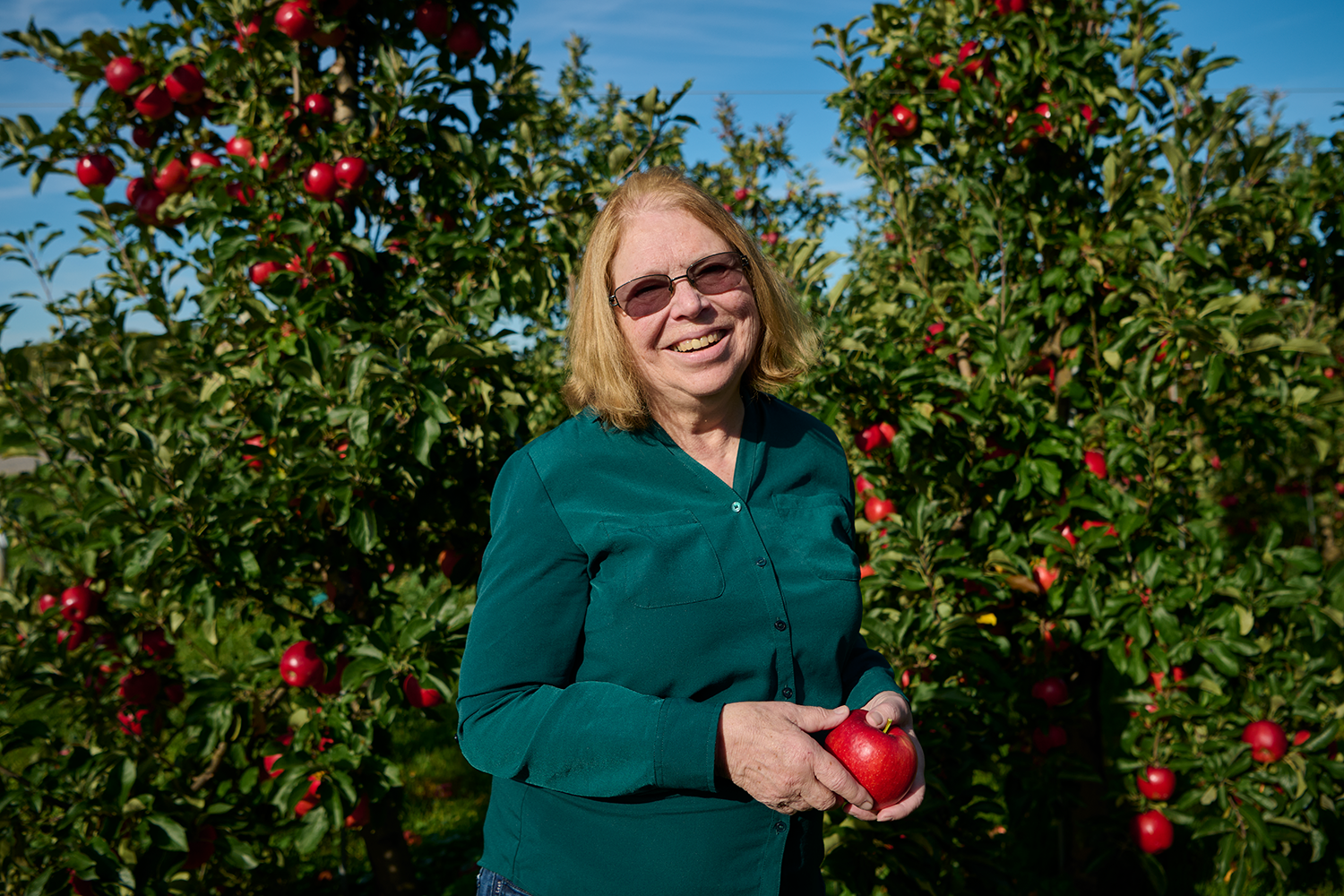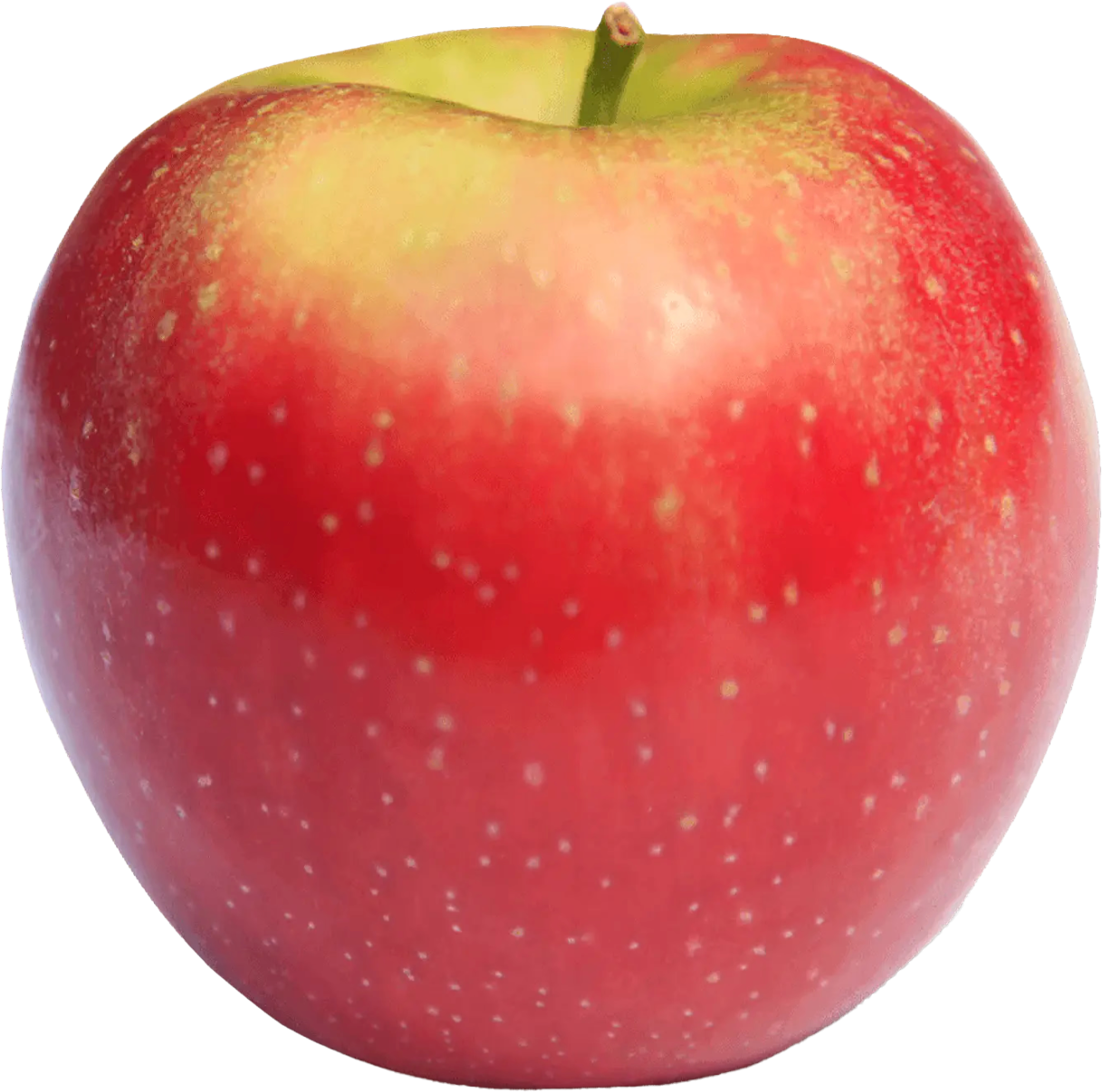Susan Brown, Inventor of Your Next Favorite Apple

What does it mean to be queen of the fruit breeding universe? Well, consider that in 2024, the SnapDragon cultivar Susan Kotowski Brown ’78 (CAHNR) created was named the official apple of the NFL’s Buffalo Bills, received Poland’s 2024 Innovative Produce award, and was named the year’s outstanding cultivar by the American Society for Horticultural Science.
Brown is the Herman M. Cohn Professor of Agriculture and Life Sciences at Cornell AgriTech, an agricultural experiment station in Geneva, New York, where she has worked since the mid-’80s. But her journey to becoming one of the nation’s premier fruit breeders is deeply rooted in the woods and meadows of East Haven, Connecticut.
“My mom had an amazing green thumb with both houseplants and her flower and rock gardens, and she taught me about native plants and their uses. My dad bred racing pigeons, so I learned about breeding and selection from him.”
When Brown was “about 10 or 12,” her interest in research was sparked when her mother took her to the annual plant science day at the Connecticut Agricultural Experiment Station’s research farm in Hamden — a facility much like Cornell AgriTech. A few years later, she chose to follow her older brother, William Kotowski (who played football for UConn for two years before transferring), and older sister, Lynn Kotowski ’72 (ED), to Storrs.
Her UConn education “rivals that of all the universities” she’s been associated with, says Brown, because of its “great depth and breadth, small class sizes, and the ability to know your professor.” She cites Edward Carpenter, Sidney Waxman, and Ronald Parker as strong influences.
“ … graduate students tease me that I’m the Yoda of the internet.”
“Edward Carpenter’s woody plant identification course was fun and useful. The fact that UConn received the 2024 arboretum accreditation probably was a result of his efforts in the past to diversify our landscape. Sidney Waxman’s research on witches’ broom was fascinating.” And she really started seeing how all the pieces of research fit together while working on an honors project on the flowering plant vinca (catharanthus) with Parker, who was her faculty advisor. The lesson stuck.
“I am very obsessive about making sure I understand the literature on a topic, and the graduate students tease me that I’m the Yoda of the internet because I’m always searching for things by using different terms and finding different combinations,” she says. Hoping to continue her ornamental horticulture studies, Brown went to Rutgers University in New Jersey for graduate school, but the only openings for funding were asparagus breeding or fruit breeding. Fruit breeding it was. She followed that field experience with genetics experience doing peach breeding at the University of California, Davis, where Brown learned she liked the professorial side of research, too. “I was also a teaching assistant, and I loved it.” She started at Cornell in cherry breeding, co-inventing 11 cherry varieties: 10 sweet and one tart. In 1990, she was transferred to apple breeding, “and the fun accelerated,” she says.
That “accelerated” fun has seen Brown invent eight apple varieties, including the celebrated SnapDragon (from Crunch Time Apple Growers). She loves developing something with real-world outcomes, which “consumers are eating and enjoying,” she says. “Having SnapDragon named the official apple of the Buffalo Bills and the Innovative Produce item in Poland was icing on the cake. My ancestors are smiling.”
By Gary E. frank
Photo by Peter Morenus

Susan Kotowski Brown’s Top 5 Fruit Inventions:
Apples
SnapDragon (NY 1): This offspring of Honeycrisp by an advanced breeding selection has the favorable Honeycrisp attributes of juiciness, crispness, and flavor, with fewer of the grower challenges, including soft scald and bitter pit. Pictured above.
Autumn Crisp (NY 674): This favorite at roadside stands boasts crisp, juicy fruit, a great sweet/acid balance, and resistance to flesh browning when the fruit is cut.
RubyFrost (NY 2): A hybrid of Braeburn and Autumn Crisp, this ruby red apple is great for fresh eating and baking, is resistant to flesh browning, and has high levels of vitamin C.
FireCracker (NY 109): FireCracker is a triple treat, as it is good for fresh eating, baking, and hard cider.
Cherry
Black Pearl (NY 8139): The Black Pearl sweet cherry is a hybrid of the Vernon and Coral Champagne cherries and is grown in New York, Michigan, Oregon, and Washington.

I can give a shout-out in behalf of Dr Sidney Waxman. I worked closely with him on his witches brook projects and found him as an absolutely wonderful mentor. We spent much time driving in New England seeking to obtain seeds of naturally occurring witches brooms. Seeds were planted and many new and wonderful trade varieties of evergreens were developed for the nurseryman’s trade. Sid was one fine dude, I can’t say enough about the man and his humanity. His door was always open and spontaneous discussions often developed as I walked by his office. In a department replete with wonderful faculty, Sidney Waxman stood out as a nonpareil. Sid was the greatest of the Great.
Susan Brown noticed these things about Sidney Waxman and she reinforces my approbations of him. Great times in the “old days”.
I very much like SnapDragon apples. I find and buy them at my local Wegman’s.